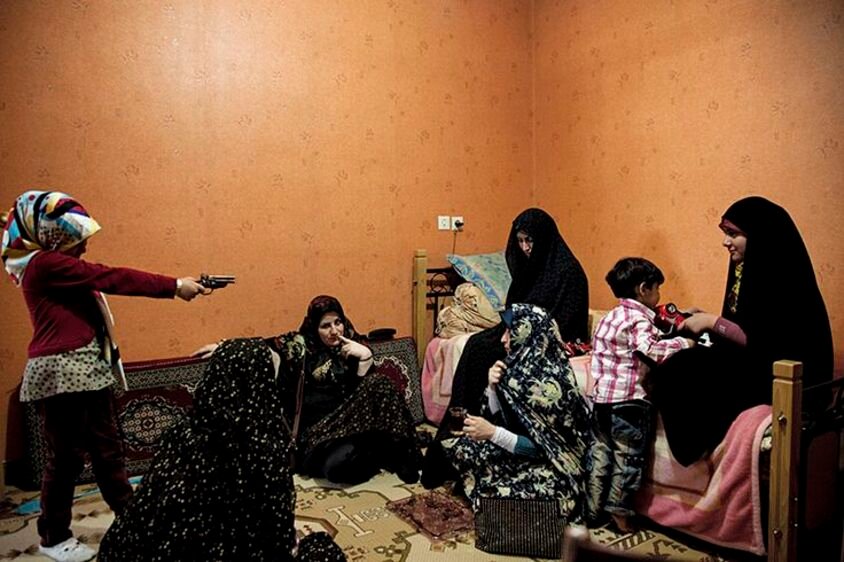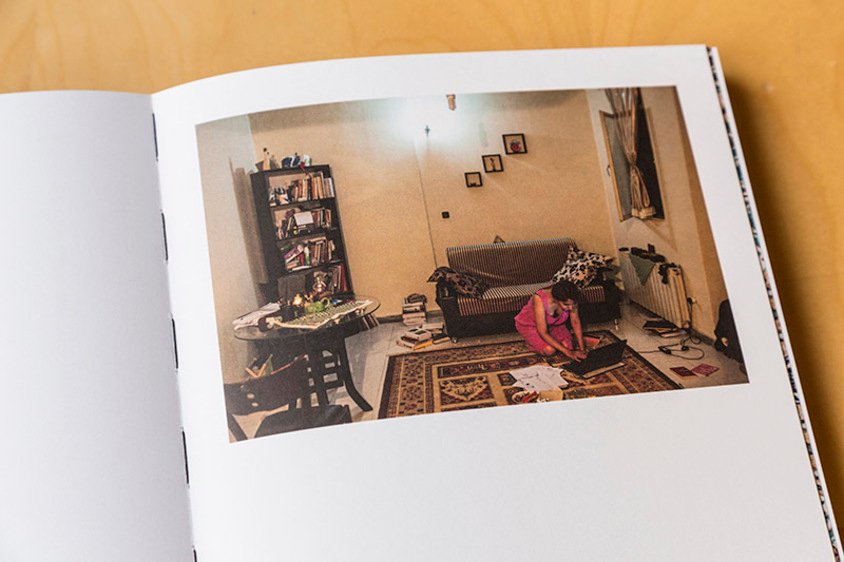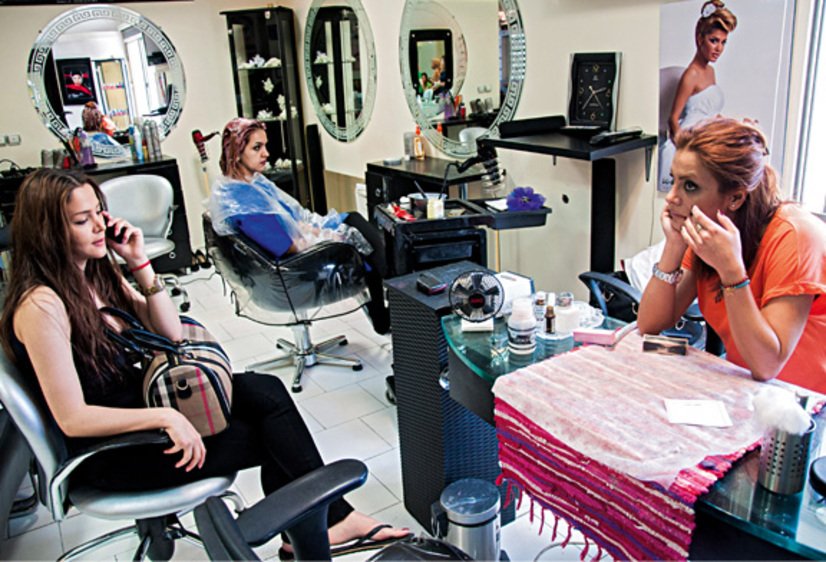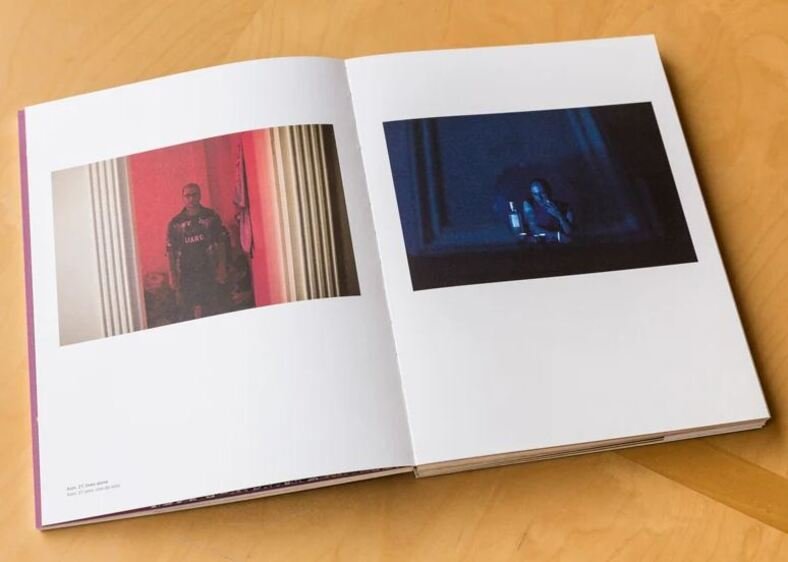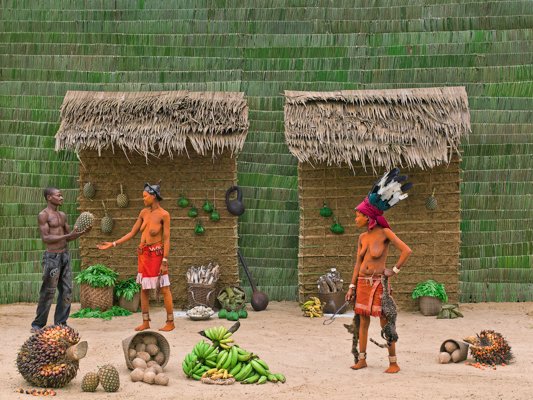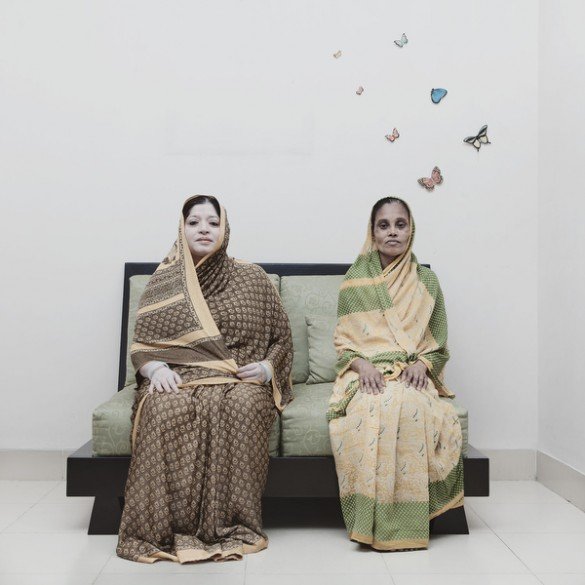Iran –
Iranian Living Room is the first of a series of editorial projects self-published by Fabrica, a think tank in Treviso, Italy, that is bankrolled and run by the fashion company Benetton. The reasons why Fabrica chose to self-publish are two fold: they strongly felt that the economics of the photo-book industry never really work in favour of the people who actually ‘make’ the book; also, the mechanics of getting the book into bookstores is far from easy. So they started a press, designed the book themselves and then opened their own online store where customers could contact them directly. The book was launched in a limited edition of 500 copies, all which sold out faster than the tickets to a world cup football final.

Enrico Bossan, who leads the photography department at Fabrica, and is also Editorial Director at the legendary Colors magazine, oversaw the project. The book is in line with the strong tradition of social journalism followed by Fabrica over the years. It was an idea that struck him first in 1989; he followed it up this year by commissioning 15 young Iranian photographers (they are all under 25) to take photos of the interiors of homes. The story begins with local photographer Farhad Babaei whom Bossan spotted while surfing the Internet; through Babaei, Bossan managed to get in touch with others. Out of a shortlist of 50, 15 made it to the book. His brief to them was simple: “Portray situations you don’t usually see in public and, through storytelling, help change the stories we tell about Iran.”
When Bossan arrived in Tehran after a gap of 20 years to hold a workshop connected with the project, he was in for a surprise. He noticed that many of the girls, right from the airport to the hotel to those on the streets – all had Band Aids on their noses. A simple query revealed the answer: in a country where the face is the only part of the body one is allowed to reveal publicly, plastic surgery had become all the rage. The quest for the perfect feminine nose is well and truly underway in Iran. One can hear Michael Jackson applauding in heaven.
For a specialized photo-book, the Iranian Living Room has created an unprecedented and rare splash in the world’s mainstream media. The reasons are not too far to find. Iran is a country in the news for the wrong reasons: its nuclear ambitions, the bearded hard line clerics who hand out fatwa’s dime a dozen, demonstrations in public squares, a country always on the verge of war. This is the impression one gets from the coverage of international news channels like the BBC and CNN, even Al Jazeera. By taking us into personal, private spaces, this book blows the lid off our tin box of Iranian stereotypes. The brand of candid photography it promotes is brave, revealing, humbling, and pushes open the limits of our universe by quite a few inches. At the very least, it reminds us of a reality that we all know deep within but forget only too easily in the maelstrom of the real world: that people are the same wherever you go. Especially young people.
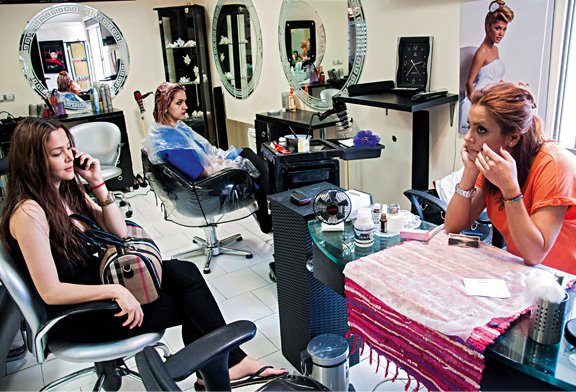
Beauty salon, Tehran. Zohreh sitting at her desk while the customers wait © Sahar Pishsareeian
- Divided into as many sections as there are photographers, the book shows us intimate scenes of everyday life in private spaces. Needless to say that in countries like Iran, where much of the public space is regulated (clothing; interaction between the sexes; the ban on discos and cinemas), life as the world knows it and takes for granted, is often pushed indoors.
Many of these portraits walk the edge of permissibility – there is the odd reference to premarital sex and women drinking. We learn that this is a society where 1 in 7 people are single; almost 60% of the population is under 30. People lead the single life here just as they would anywhere in the world. Flat screen TVs and video games and Marlboro cigarettes and 7 Up and Vaio laptops feature in several photographs. There are piled-up dishes in the sink. Girls wear tank tops with their cleavage showing and curl up with their boyfriends. Just like in India, hostels have strict rules so many people prefer to take shared apartments. Even though under Islamic law pets are not allowed on the streets, there is a whole section here dedicated to people with pets. Beauty salons abound, often the only source of income for the over 100, 000 Iranian women who are divorced each year, and who work in these apartment salons for up to10 hours each day.
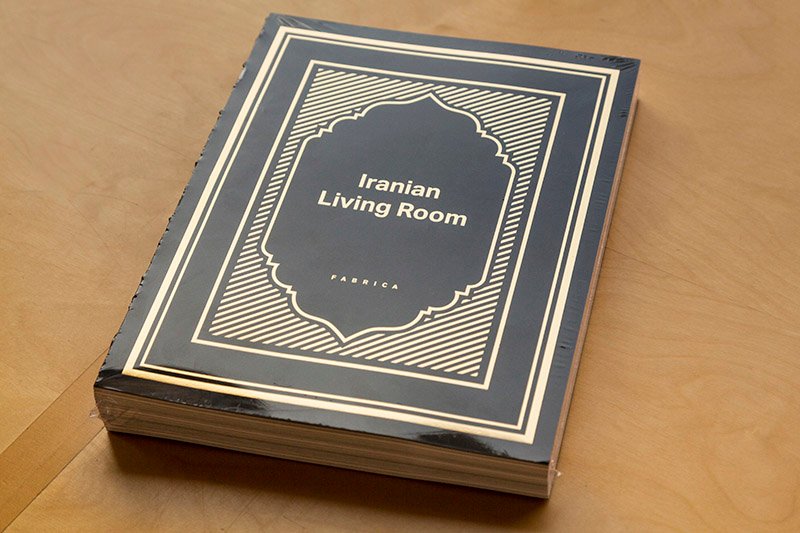
The lasting picture one is left with is of a liberated people who lead a universal urban lifestyle but in the privacy of their homes. It also seems that a more liberal Iranian dispensation, while extremely strict at imposing the private/public distinction in their own country, is not so bothered if images of the Iranian private sphere are shared liberally in the Western public sphere. Therein lies the change from the Khomeini years.
Fabrica Store – http://store.fabrica.it/
(The writer is the author of The Butterfly Generation: A Personal Journey into the Passions and Follies of India’s Technicolor Youth. He writes a regular column for Mail Today Sunday and Time Out Delhi)
